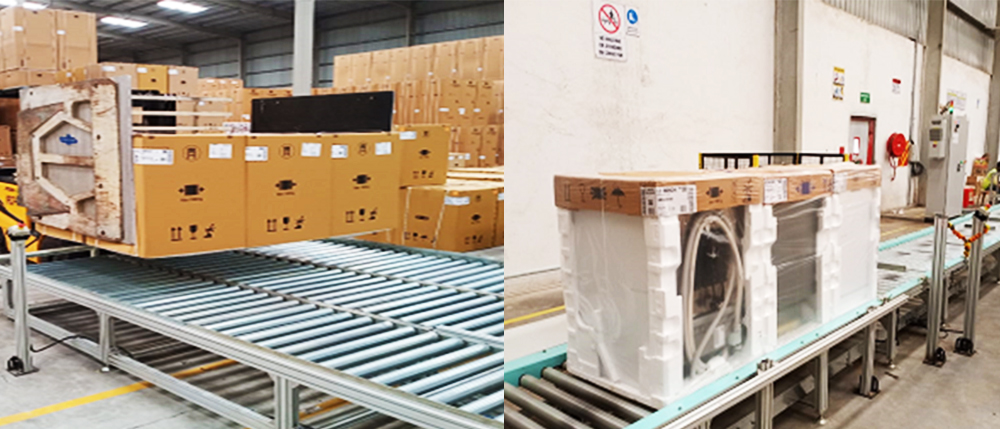Striking the Balance: People-Centric Logistics in the Age of Automation
- January 4, 2024
- Blog
Logistics as an industry is going through a remarkable transformation, largely fuelled by tech interventions and advances. AI (Artificial Intelligence), cloud computing, data analytics, and RPA (Robotics Process Automation) have changed the way logistics operations are handled and managed, paving the way for accuracy, scalability, and speedy alerts. With tech being an integral part of logistics, the positive impact is visible on the supply chain efficiency and effectiveness.
 However, even with digital advancement, there is always a lasting impression of the human touch in the logistics equation. While algorithms and machines can process huge data and optimise routes, they can’t understand the nuances of human behaviour, emotions, and personalised interactions and this is where the human touch stands out in supply chain logistics operations
However, even with digital advancement, there is always a lasting impression of the human touch in the logistics equation. While algorithms and machines can process huge data and optimise routes, they can’t understand the nuances of human behaviour, emotions, and personalised interactions and this is where the human touch stands out in supply chain logistics operations
In inventory management and distribution, the human touch denotes the unique connection and support that real people bring to the table through the encouraging voice on the other end of the line, the focused ear that listens to your issues, and the problem-solving mindset and adapting swiftly to unforeseen challenges. In customer service, the human touch becomes the differentiating factor that can make or break a business relationship.
In today’s fast-paced world, where digitalization is given utmost importance, customers still value the human touch, the personal and emotional connection that makes them feel valued and understood. The business today must know how to strike the right balance between the human touch and digitalization to maximize logistics performance and customer experience. Let’s look at some ways to help achieve this balance.
Know your customer and their requirements
Understanding the needs of the customers is the very first step. Know what your customers need, their pain points and expectations, their feedback and suggestions. By talking to them, you can get valuable insights into their preferences and satisfaction. With a clear understanding, you can easily customise your automation and human touch strategies.
Digitalise the mundane tasks
The second step is to digitalise the repetitive and mundane tasks that do not require much human interaction or creativity. The best example could be email automation to handle simple inquiries, confirmations, reminders, updates and chatbots. Not only that, with the use of AI, data entry, document generation and quality assurance can be easily automated ensuring the optimisation of time, money and resources as well as reducing human errors. This automation could also allow employees to focus on meaningful tasks that require human skills and expertise.
Initiating the Personal Interventions where it matters most
The third step to finding the accurate balance between automation and the human touch is where it matters most. For example, human emotions can handle complex or sensitive issues, such as complaints, refunds, or escalations. Human touch can be used to provide personalised recommendations, advice and guidance wherever needed as per customers’ needs and preferences. Automation can help solve issues related to operations. Still, it’s only the human touch that can offer rapport and trust to customers through gratitude and appreciation for long-lasting customer relationships.
STRIKING THE BALANCE
The fourth important point is to monitor the balance between the automation and the human touch strategies. This can be done via key performance metrics like response time, resolution rate, and customer satisfaction score (CSAT), to measure the effectiveness and efficiency of the automation. The result of human angle can be measured by collecting feedback from customers on how they find the solutions that are offered and how they are helpful to their businesses.
Automation and the human interventions are complementary to each other, finding the right balance between the two is significant to optimize the business performance and for customer experience and satisfaction. The key is to understand your customer’s needs and preferences and work around them using automation and human touch as a combined package. By doing so, it can create a competitive advantage for any business in the digital age



